This bar is the kind of place you expect to stumble across in an F. Scott Fitzgerald novel. Soft light cascades from an expansive crystal chandelier that hangs over the bar. Patrons sink into plush leather chairs and oversized sofas while perusing leather-bound menus stacked with rare spirits and unique cocktails. Chopped firewood rests against the red brick wall in the back of the bar and in the winter months a fire roars next to it, its flames flinging flickers of soft yellow light across the barely-lit cavernous room. But this is not a fictitious playground for frenzied affairs of Gatsbian proportions; it’s the Multnomah Whiskey Library in Portland, Oregon. A place where hosts, servers and bartenders move around each other like the various parts of a well-oiled machine, quietly and methodically, mixing and pouring from the 1,500 bottles that line the backlit walls surrounding the bar.
When I sat down with the Multnomah Whiskey Library’s Australian-born bar manager, Jordan Felix, who began working in the bar industry at the age of 13, and asked him to create a cocktail of his choosing for me, he mulled it over for a bit before asking, “Do you want it feature a particular spirit? Should it be something already on the list?” Not picking up on his questions as part of the bar’s broader program, which includes the intention of communicating extensively with guests about their cocktail and spirit preferences, I replied with a quick, “Whatever is inspiring you today.”
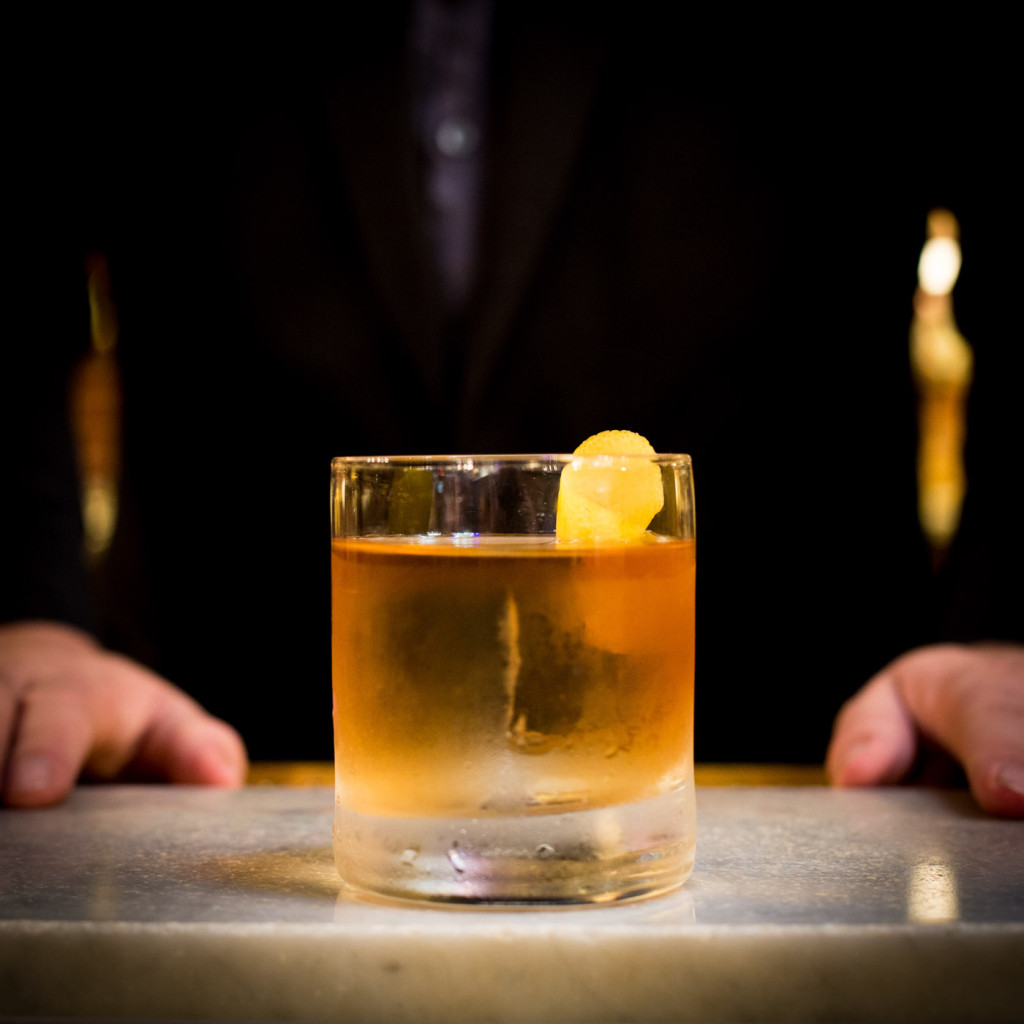
Loch and Laggan
1½ oz. – Bowmore 12-year Single Malt Scotch
½ oz. – El Maestros Sierra 15-year Oloroso Sherry
1 tsp. – Whiskey Lattone Syrup*
1 dash – Angostura Bitters
1 dash – Fee Brothers Whiskey Barrel Bitters
Directions: Add all of the ingredients to a mixing glass with ice. Stir, strain, and pour over a large ice cube. Garnish with a lemon twist.
For the Whiskey Lattone Syrup:
2 cups – Demerara Sugar
1 cup – Water
2 oz. – Lattone Granules
Directions: Combine sugar and water in a large saucepan. Bring to a boil and cook, stirring constantly, until the sugar has dissolved. Remove from heat and stir in lattone granules. Cool before using.
Felix cast a knowing glance and moments later he was up and down the ladders that hung from the wall of spirits, gathering various bottles—some branded and others unmarked—and accumulating them in one of several marble-topped, brass-adorned wooden carts.
“Let’s do a little play off of an old fashioned, but with scotch. It’s a cocktail I did up in Canada and it’s called a Loch and Laggan. It uses a thing called Whiskey Lattone, which we made into a syrup,” he explains. I sat quiet for a moment, unsure of whether this ingredient he was referencing—lattone—was something I should already be aware of. I wasn’t. Felix must have picked up on the puzzled expression in my eyes because he followed up with an explanation: “Basically, after they dump the whiskey out of the barrels, they take a syringe and inject it into the barrel to pull out the tannins. Then they make the tannins into a powder. A lot of wineries use it. They take the tannins from a whiskey barrel and they add it to pinot noir or to wines that they want to give a little bit of a whiskey barrel body to one of their wines.” I sank into my plush seat at the bar, trying to wrap my head around the concept.
“So, how do you get it into your cocktails?” I ask.
He smiled a bit before replying, “When my father—he works in the wine industry—gave it to me he said, ‘What do think you could do with this for cocktails?’ I figured I could probably make a syrup with it. It actually creates this amazing body, this unique characteristic to wrap around the cocktail. It’s just excellent. So, we’ll do a scotch old fashioned with that over a large cube and then a beautiful lemon twist.”
Moments later, he was holding a glass toward me. I sipped and was immediately transported by the spirit-driven cocktail. A barely-there oaky smoke mingled with nutty notes and just a subtle hint of vanilla, a balanced layering of flavors that begged to be paired with food cooked over an open flame. It was then that I realized just where the bar—also referred to locally as “The Library”—had gotten its name. And it seemed fitting because it wasn’t just a bar. It was a quiet place to sip, a luxurious lounge to unwind, and a welcoming library where staff, industry professionals, and guests alike are invited to learn.
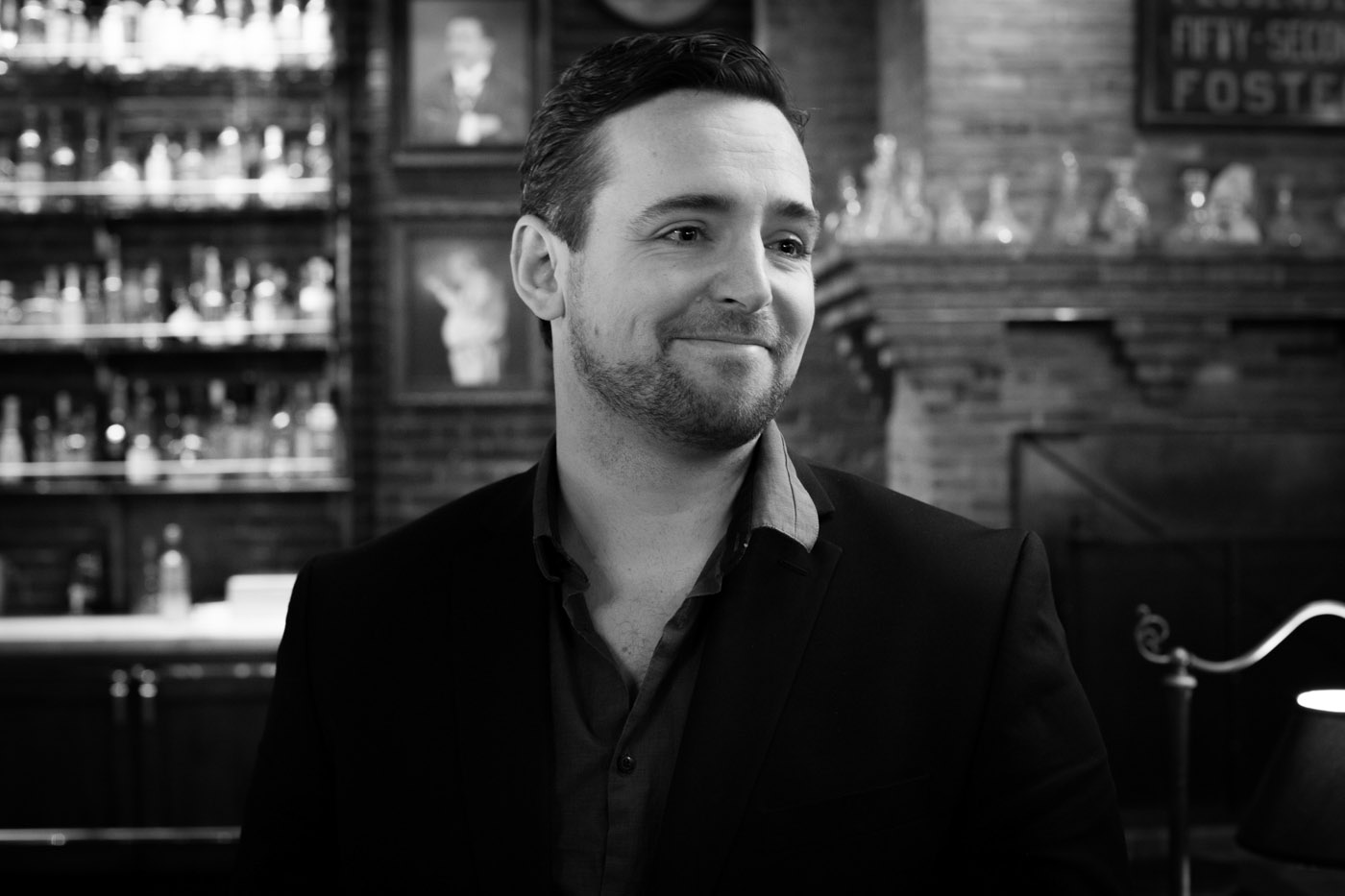
Tell me about the main pillars that go into making a place like this (a reservations-only bar with 1,500 spirits to choose from) work.
There are so many facets to this particular kind of service. A lot of eyes and a lot of people are needed on all different parts. We’re not a cocktail bar. We do cocktails, but we’re spirit-forward. Our breakup right about now is about 35-percent cocktails, 65-percent spirits. Just with the selection of spirits and with the carts coming out—the carts are such a unique concept—and having them come out and present the liquor, is about us slowing down the service. It’s about us being intentional with every little thing we do. It’s about the experience when you walk into the Library. It’s about being able to sit down and relax and be able to have a conversation. And that was the whole point of creating this space. We didn’t want to create a place that was hustle and bustle the whole time. We wanted people to sit in the big leather chairs, surrounded by rich mahogany and paintings, and relax a bit.
But education is also at the core of what we do. Every week our staff learns for two hours through our education program. We study all things about liquor, and in particular whiskey, being that whiskey is our focus. We do tastings and trainings to help our bartenders become the most knowledgeable of anyone on the West Coast.
Is the education oriented toward strictly educating staff? Or is it intended for bar patrons as well?
We have our “core membership” and we share those opportunities for education with our members. But the point of the education is really to share with the guests, but not to force it onto the guests. It’s there if they want it. We would love to inform people about spirits.
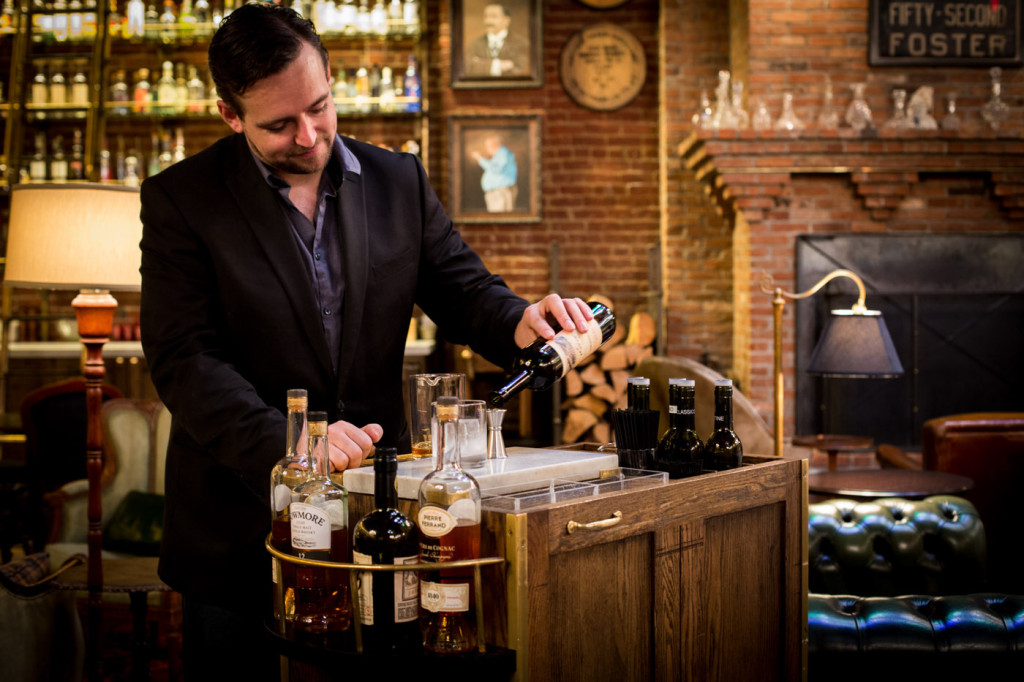
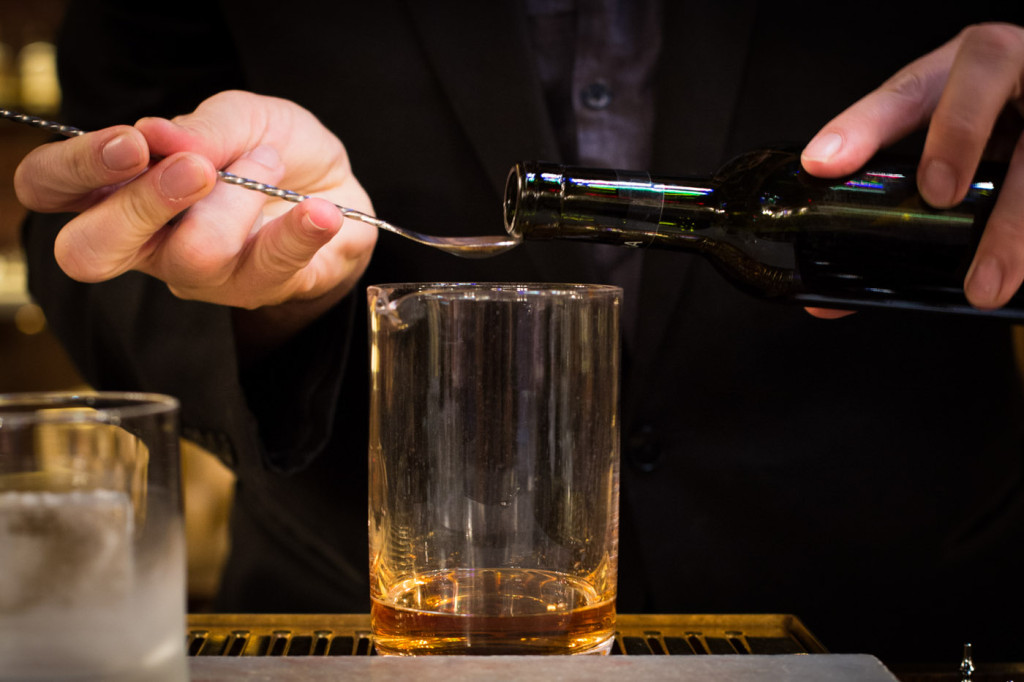
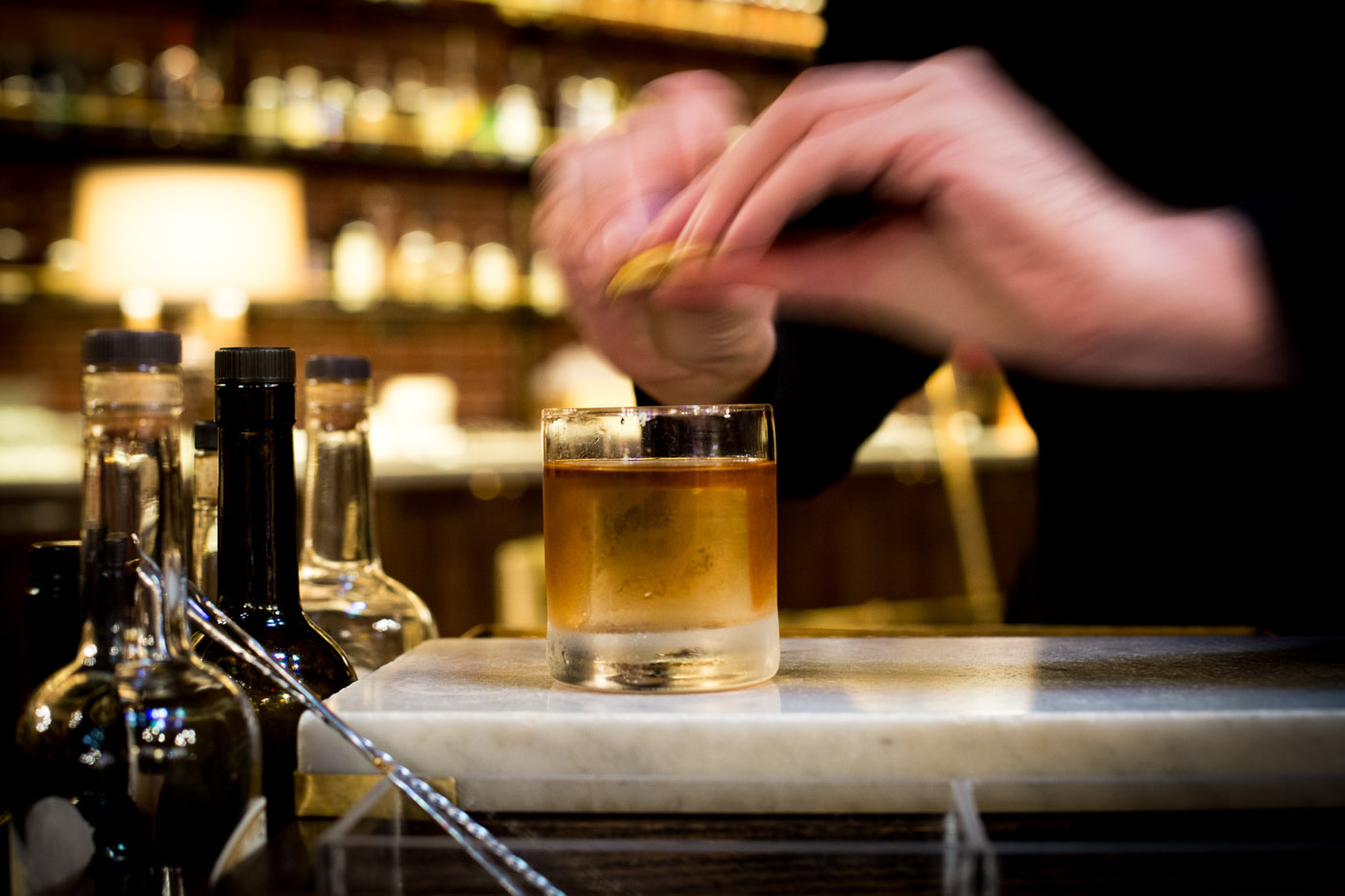
You mentioned earlier that the cart service is part of this broader goal of serving with intention. Can you tell me more about that?
For example, our mode of service: we have the host seat the guest and then the bar back or the support staff will explain the menus in front of them, where to find the food, and that sort of stuff. Then the bartender comes and introduces himself. They get down at eye level—because all of our chairs are at a lower level—and they just find out where the patrons are in their evening and have a really great conversation. The intention in that is making sure the communication is happening there. I don’t think you get to do that a lot with some bartenders behind the bars because they’re so busy.
We slow everything down and just get to a point of, “What do you feel like? Do you want to work off my recommendation? Have you had certain things before?” That sort of conversation is the intention of our service. Really getting to know them and find out if they’re out celebrating an anniversary, if they’re celebrating a birthday, or if they’re just out to get wasted and get a drink as soon as possible—that’s where the conversation is really important.
How do the carts come into play?
With the carts, we want to show and make the cocktail in front of the guest. The guest gets to interact while you’re making the cocktail. If you’re making an old fashioned, it really breaks it down by parts. You’re pouring the syrup, adding the sugar, adding the bitters, stirring for a certain amount of time, and then garnishing it nicely and serving it to the guest. It’s bringing the bar to you.
That said, this is a business and we need to have a certain kind of flow. There’s definitely a fine line of working that much into a finite time period. So we’re on a two-hour thing, like Bourbon and Branch was doing with a two-hour reservation period, but you can never really define that. It just depends on where guests are in their evening.
For example, Fridays and Saturdays are a different animal. People are out to party. So we turn tables a lot quicker because people are less inclined to have an education about their flights, and we’re here to accommodate them for that. That does get a bit difficult with the bartenders because some tables might want more attention than others. And that’s why each bartender has a support person who is constantly monitoring their section; they really are the captains of that section. While the bartender is talking to one table, their bar back is monitoring the health of the situation and is making sure everyone has what they need.
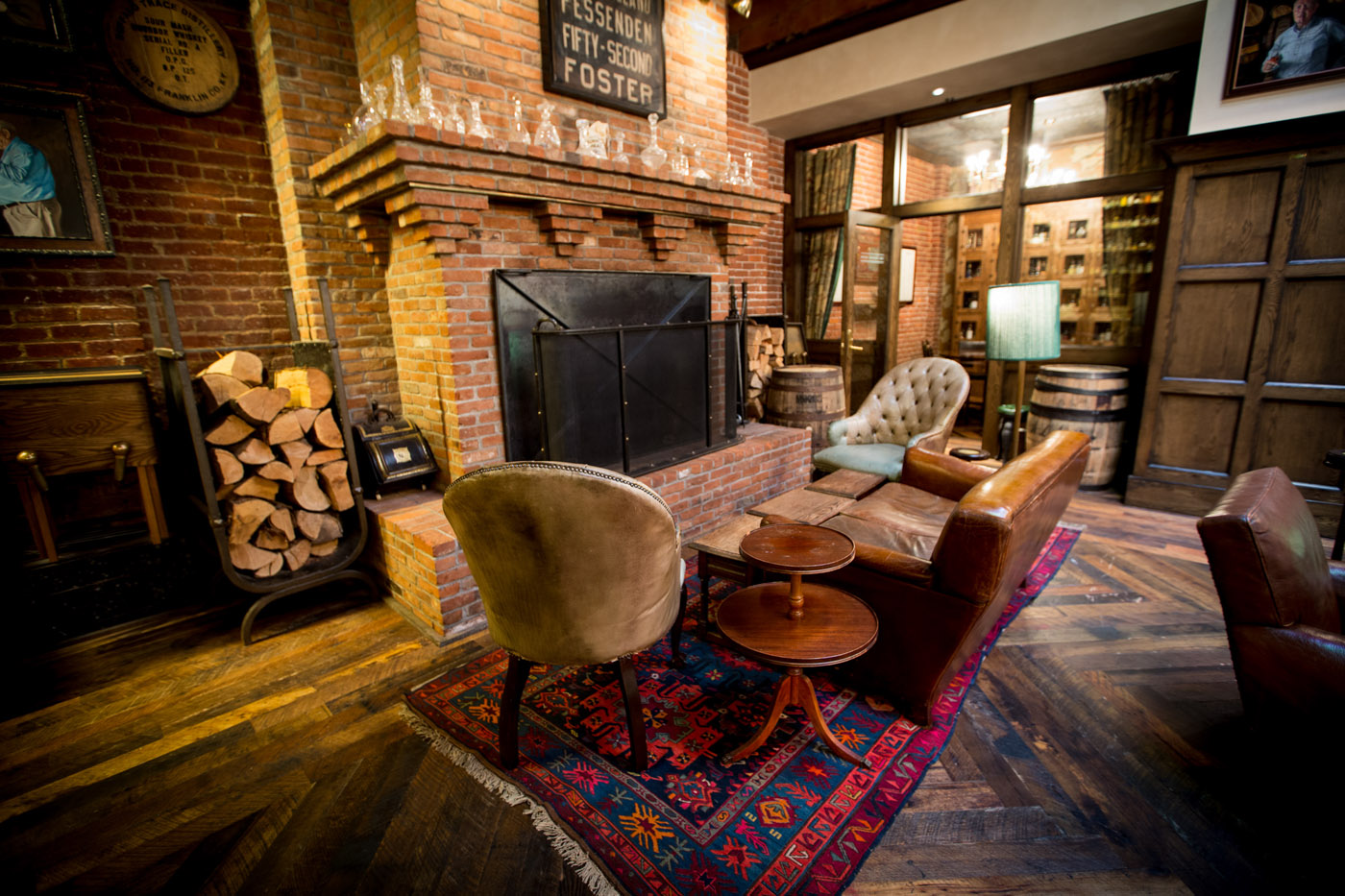
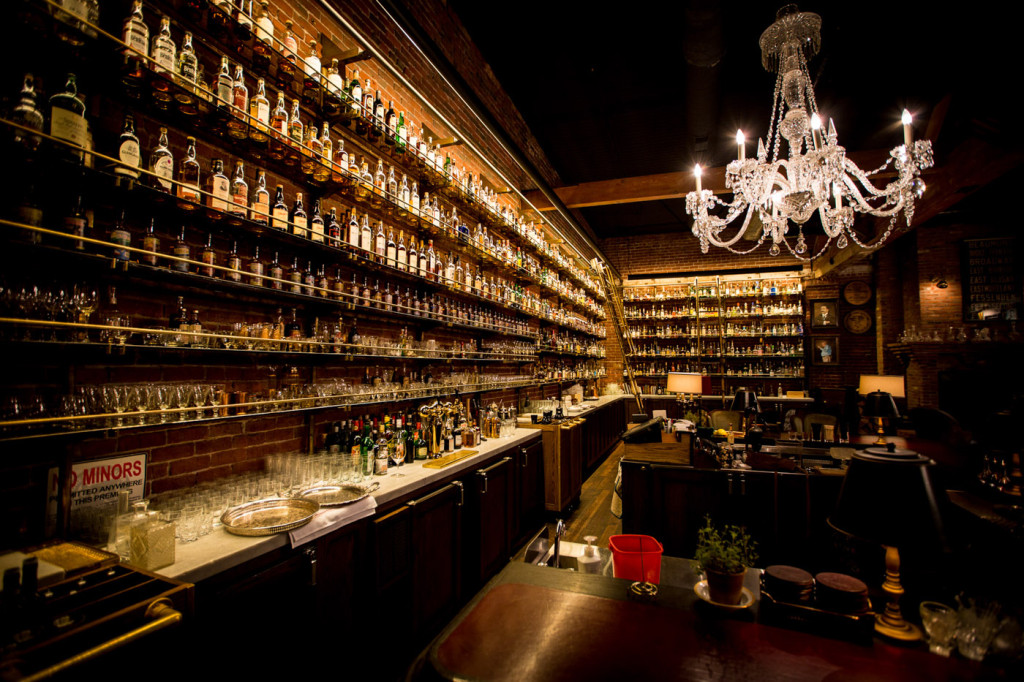

Speaking of where customers are, I imagine you get a fairly wide range in terms of your patrons’ knowledge level about spirits. How does that play into the service experience at The Library?
It’s a journey for us as well, and that’s really important. That’s something I try to get across to the bartenders here, being that you may have a guest who walks in here and he may have spent several months working at a distillery and he may have more knowledge than you. What are you going to do about it? And the last thing I want the bartenders to do is lie. It’s about being humble and when necessary saying, “I don’t know, but this is what I do know…”
Sometimes someone will come in and say, “I don’t know what I like in whiskey, but I know I don’t like scotch.” So we’ll do a flight with them and sometimes we’ll sneak in a scotch just to challenge them and then they’ll go, “Wow, this is really good. What is this?” “Scotch.” We actually do a lot of blind tastings for our staff, and we’ve stumped them with that too.
At the end of the day, it’s really about what kind of taste profile they want and that’s one of the things we ask them to tell us more about. But you have to translate it sometimes. For instance, if they say they want something “smooth,” well, spirits aren’t really smooth. Smooth is a tactile sense. What most people really mean when they use this word is they want something that’s a little lower proof, a little more full-bodied and easier to drink. We don’t say that to the guest, but we know with our education where we’re going if someone says that.
You’ve got over 1,500 bottles housed here at The Library. Tell me about what goes into creating and managing such an expansive list.
There’s an intention with every single bottle here. We don’t stock a bottle if we don’t understand its production process. And actually, we arrange our bottles by where they’re sourced from, not necessarily where they were distilled—which is very different from a lot of bars where you have bourbon, and then you just have bourbon arranged alphabetically by brand. We do it differently. For example, with our mezcal collection we arrange by where the agave was sourced from, not actually where it was distilled. We’re looking at it from a completely different level. Everything has an intention in the way it curates.
—
Multnomah Whiskey Library
1124 SW Alder St, Portland, OR 97205





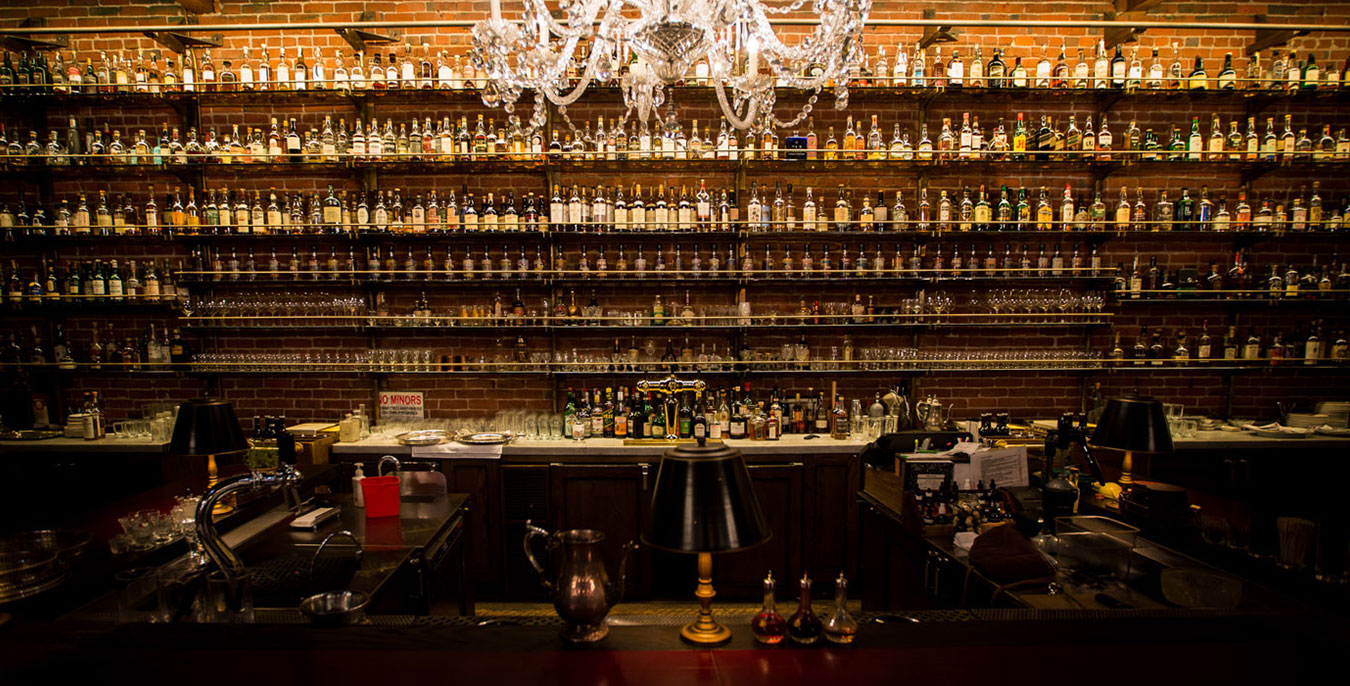

Our comments section is for members only.
Join today to gain exclusive access.